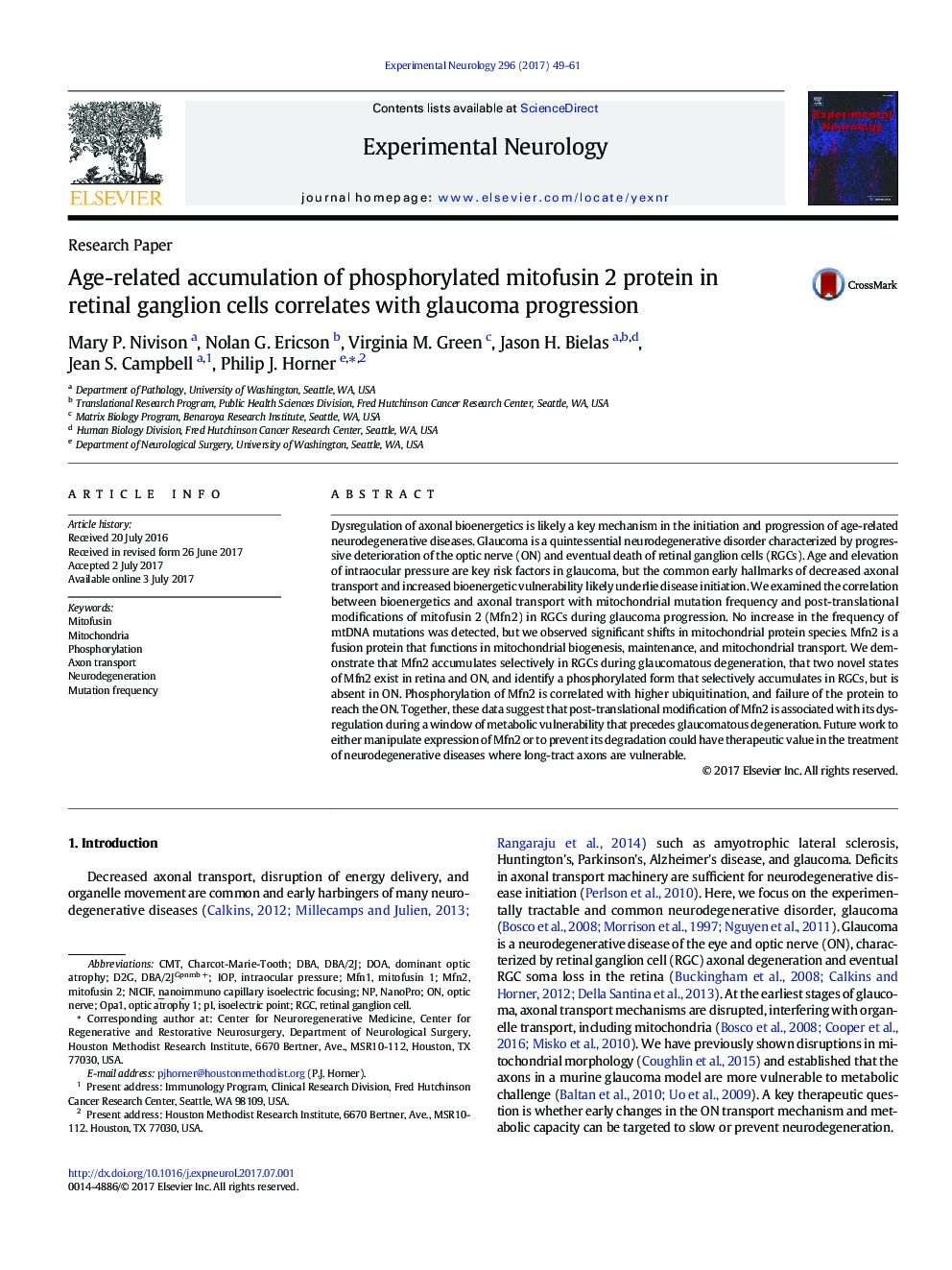| کد مقاله | کد نشریه | سال انتشار | مقاله انگلیسی | نسخه تمام متن |
|---|---|---|---|---|
| 5629135 | 1580143 | 2017 | 13 صفحه PDF | دانلود رایگان |

- Mfn1/2 proteins express age and disease related differences.
- Mfn2 accumulates significantly in the soma of diseased RGCs and is lacking from ON.
- Mfn1 protein levels do not compensate for damaged or absent Mfn2.
- Mfn2 phosphorylation state changes with disease; ubiquitin decreases in disease.
Dysregulation of axonal bioenergetics is likely a key mechanism in the initiation and progression of age-related neurodegenerative diseases. Glaucoma is a quintessential neurodegenerative disorder characterized by progressive deterioration of the optic nerve (ON) and eventual death of retinal ganglion cells (RGCs). Age and elevation of intraocular pressure are key risk factors in glaucoma, but the common early hallmarks of decreased axonal transport and increased bioenergetic vulnerability likely underlie disease initiation. We examined the correlation between bioenergetics and axonal transport with mitochondrial mutation frequency and post-translational modifications of mitofusin 2 (Mfn2) in RGCs during glaucoma progression. No increase in the frequency of mtDNA mutations was detected, but we observed significant shifts in mitochondrial protein species. Mfn2 is a fusion protein that functions in mitochondrial biogenesis, maintenance, and mitochondrial transport. We demonstrate that Mfn2 accumulates selectively in RGCs during glaucomatous degeneration, that two novel states of Mfn2 exist in retina and ON, and identify a phosphorylated form that selectively accumulates in RGCs, but is absent in ON. Phosphorylation of Mfn2 is correlated with higher ubiquitination, and failure of the protein to reach the ON. Together, these data suggest that post-translational modification of Mfn2 is associated with its dysregulation during a window of metabolic vulnerability that precedes glaucomatous degeneration. Future work to either manipulate expression of Mfn2 or to prevent its degradation could have therapeutic value in the treatment of neurodegenerative diseases where long-tract axons are vulnerable.
Journal: Experimental Neurology - Volume 296, October 2017, Pages 49-61